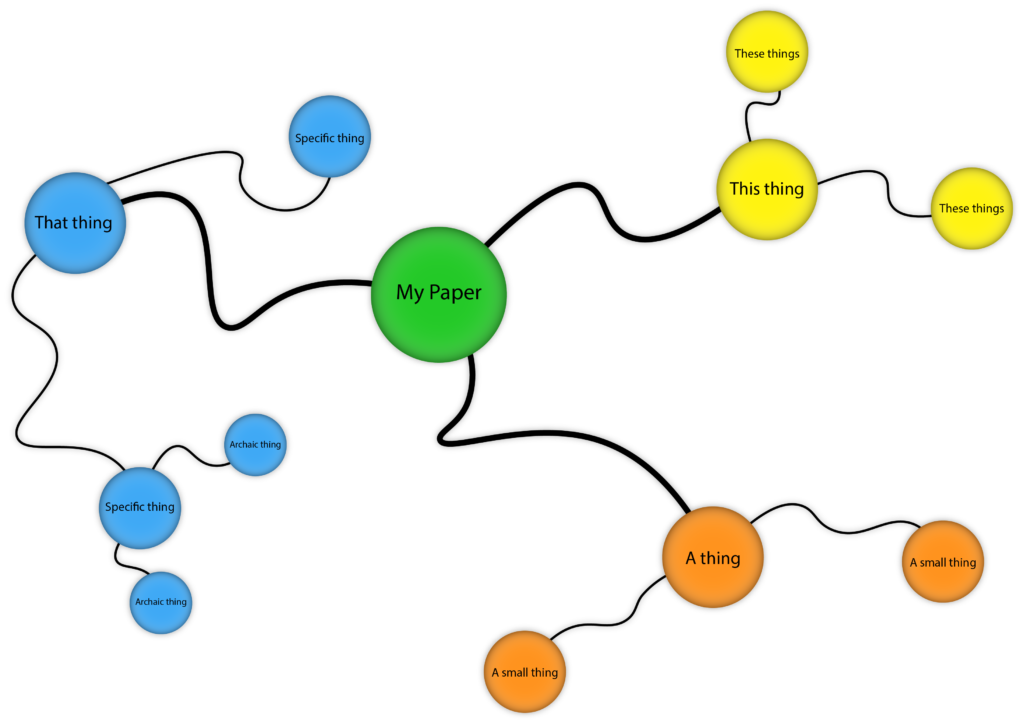Part 2: Chapter 6
If you think a blank sheet of paper or a blinking cursor on the computer screen is a scary sight, you are not alone. The textbook English for Business Success states that many writers, students, and employees find that beginning to write can be intimidating. When faced with a blank page, however, experienced writers remind themselves that writing, like other everyday activities, is a process. Every process, from writing to cooking, bike riding, and learning to use a new cell phone, will become significantly easier with practice.
Just as you need a recipe, ingredients, and proper tools to cook a delicious meal, you also need a plan, resources, and adequate time to create a good written composition. In other words, writing is a process that requires following steps and using strategies to accomplish your goals.
These are the five steps in the writing process:
- Prewriting
- Outlining the structure of ideas
- Writing a rough draft
- Revising
- Editing
Effective writing can be simply described as good ideas that are expressed well and arranged in the proper order. This chapter will give you the chance to work on all these important aspects of writing. Using the strategies in this chapter can help you overcome the fear of the blank page and confidently begin the writing process.
Prewriting
Prewriting is the stage of the writing process where you transfer your abstract thoughts into more concrete ideas in ink on paper (or in type on a computer screen). Although prewriting techniques can be helpful in all stages of the writing process, the following four strategies are best used when initially deciding on a topic:
- Using experience and observations
- Reading
- Freewriting
- Asking questions
In addition to understanding that writing is a process, writers also understand that choosing a good general topic for an assignment is an essential step. Sometimes your instructor will give you an idea to begin an assignment, and other times your instructor will ask you to come up with a topic on your own. A good topic not only covers what an assignment will be about but also fits the assignment’s purpose and its audience.

The first important step is to tell yourself why you are writing (to inform, to explain, or some other purpose) and for whom you are writing. Write your purpose and your audience on a sheet of paper, and keep the paper close by as you read and complete exercises in this chapter.
My purpose:
My audience:
The following checklist can help you decide if your narrowed topic is a good topic for your assignment.
-
Am I interested in this topic?
-
Would my audience be interested?
-
Do I have prior knowledge or experience with this topic? If so, would I be comfortable exploring this topic and sharing my experiences?
-
Do I want to learn more about this topic?
-
Is this topic specific?
-
Does it fit the length of the assignment?
- Can I achieve the assignment’s purpose with this topic?
With your narrowed focus in mind, answer the bulleted questions in the checklist for developing a good topic. If you can answer “yes” to all the questions, then you have a good topic. If you answer “no” to any of the questions, think about another topic or adjust the one you have and try the prewriting strategies again.
Using Experience and Observations
When selecting a topic, you may also want to consider something that interests you or something based on your own life and personal experiences. Even everyday observations can lead to interesting topics. After writers think about their experiences and observations, they often take notes on paper to better develop their thoughts. These notes help writers discover what they have to say about their topic.
Reading
Reading plays a vital role in all the stages of the writing process, but it first figures in the development of ideas and topics. Different kinds of documents can help you choose a topic and also develop that topic. For example, a magazine advertising the latest research on the threat of global warming may catch your eye in the supermarket. This cover may interest you, and you may consider global warming as a topic. Or maybe a novel’s courtroom drama sparks your curiosity of a particular lawsuit or legal controversy.
After you choose a topic, critical reading is essential to the development of a topic. While reading almost any document, evaluate the author’s point of view by thinking about his/her main idea and support. When you judge the author’s argument, you discover more about not only the author’s opinion but also your own. If this step already seems daunting, remember that even the best writers need to use prewriting strategies to generate ideas.
Prewriting strategies depend on your critical reading skills and your level of effort. You can use prewriting exercises (and outlines and drafts later in the writing process) to further develop your topic and ideas.
Freewriting
Freewriting is an exercise in which you write freely about any topic for a set amount of time (usually three to five minutes). During the time limit, you may jot down any thoughts that come to your mind. Try not to worry about grammar, spelling, or punctuation. Instead, write as quickly as you can without stopping. If you get stuck, just copy the same word or phrase over and over until you come up with a new thought.
Writing often comes easier when you have a personal connection with the topic you have chosen. Remember, to generate ideas in your freewriting, you may also think about readings that you have enjoyed or that have challenged your thinking. Doing this may lead your thoughts in interesting directions.
Quickly recording your thoughts on paper will help you discover your position on a topic. When writing quickly, try not to doubt or question your ideas. Allow yourself to write freely and unselfconsciously. Once you start writing with few limitations, you may find you have a clearer position than you first realized. Your flow of thoughts can lead you to discover even more ideas about the topic. Freewriting may even lead you to discover another topic that excites you even more.
Asking Questions
Who? What? Where? When? Why? How?
In everyday situations, you pose these kinds of questions to obtain more information. Who will be my partner for the project? When is the next meeting? Why is my car making that odd noise? Even the title of this chapter begins with the question “How do I begin?”
You seek the answers to these questions to gain knowledge, to better understand your daily experiences, and to plan for the future. Asking these types of questions will also help you with the writing process. As you choose your topic, answering these questions can help you revisit the ideas you already have and generate new ways to think about your topic. You may also discover aspects of the topic that are unfamiliar to you and that you would like to learn more about. All these idea-gathering techniques will help you plan for future work on your assignment.
Adapted from “Chapter Seven” of English for Business Success, 2012, used according to creative commons CC BY-NC-SA 3.0
Creative Prewriting Techniques
The textbook English for Business Success explains that the prewriting techniques of freewriting and asking questions can help you think more about your topic; however, you have more strategies available to you, some less linear and more creative, to help you begin your writing journey. These include brainstorming, idea mapping, and searching the Internet.
Brainstorming

Brainstorming is similar to list making. You can make a list on your own or in a group with your classmates. Start with a blank sheet of paper (or a blank computer document) and write your general topic across the top. Underneath your topic, make a list of more specific ideas. Think of your general topic as a broad category and then list items that fit in that category. Often you will find that one item can lead to the next, creating a flow of ideas that can help you narrow your focus to a more specific paper topic.
Idea Mapping
Idea mapping allows you to visualize your ideas on paper using circles, lines, and arrows. This technique is also known as clustering because ideas are broken down and clustered, or grouped together. Many writers like this method because the shapes show how the ideas relate or connect, and writers can find a focused topic from the connections mapped. Using idea mapping, you might discover interesting connections between topics that you had not thought of before.

To create an idea map, start with your general topic in a circle in the center of a blank sheet of paper. Then write specific ideas around it and use lines or arrows to connect them together. Add and cluster as many ideas as you can.
Searching the Internet
Using search engines on the internet is a good way to see what kinds of websites are available regarding your topic. Writers use search engines not only to understand more about the topic’s specific issues but also to get better acquainted with their audience.
When you search the internet, type some keywords from your broad topic or words from your narrowed focus into your browser’s search engine (many good general and specialized search engines are available for you to try). Then look over the results for relevant and interesting articles.
Not all the results that online search engines return will be useful or reliable. CNM’s Library offers additional information on evaluating online sources. Give careful consideration to the reliability of an online source before selecting a topic based on it. Remember that factual information can be verified in other sources, both online and in print. If you have doubts about any information you find, either do not use it or identify it as potentially unreliable. For more information, you can either visit the following CNM Libraries link:
or read ahead to Chapter 32.
Narrowing the Focus
Narrowing the focus means breaking up the topic into subtopics, or more specific points. Generating several subtopics will help you eventually select the ones that fit the assignment and appeal to you and your audience. For a more extended discussion of how to narrow down a paper’s focus, check out the Research Process Chapter.
Adapted from “Chapter Seven” of English for Business Success, 2012, used according to creative commons CC BY-NC-SA 3.0